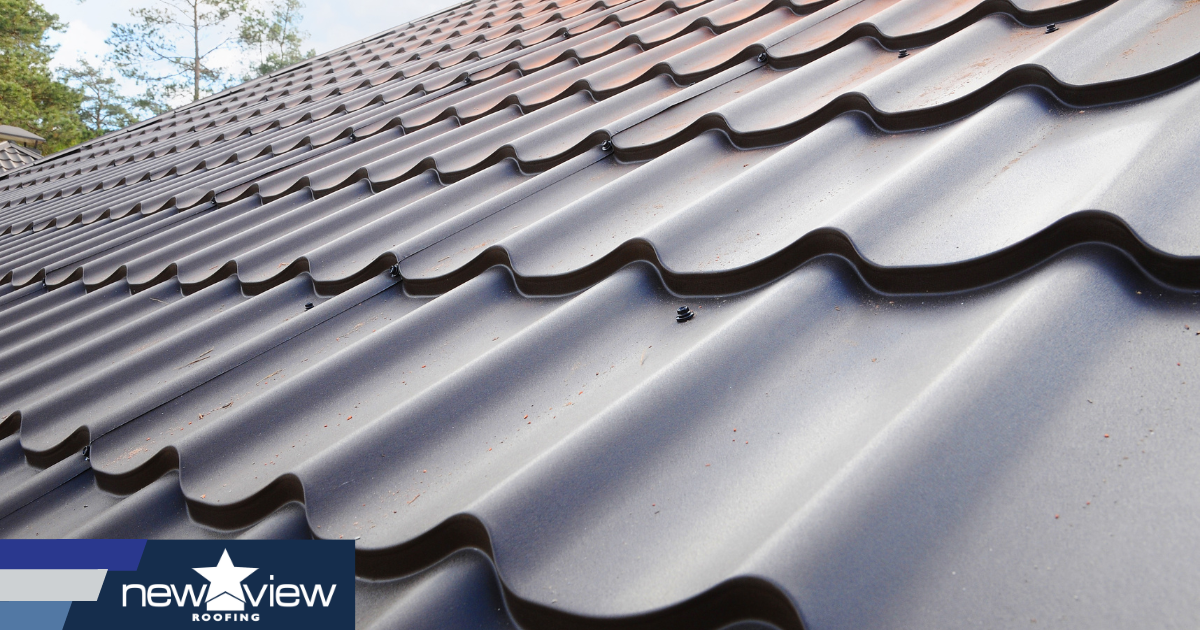Step-by-Step Overview to Finding the Right Roofing Companies in Gainesville
Step-by-Step Overview to Finding the Right Roofing Companies in Gainesville
Blog Article
Finest Practices for Ensuring Correct Roofing Ventilation
Guaranteeing proper roof ventilation is important for the durability and efficiency of a roof system. A balanced intake and exhaust air vent ratio, commonly 1:300, plays a critical function, with intake vents ideally positioned at the reduced edge of the roof for trendy air access and exhaust vents at the height for warm air exit. Normal assessments to identify clogs and maintain clear air movement are critical. Additionally, keeping insulation far from vents is essential to stop air flow restriction. Comprehending these fundamental elements sets the stage for more in-depth understandings into installment and upkeep practices that can dramatically improve your roof's efficiency.
Understand Ventilation Fundamentals
Correctly comprehending air flow essentials is essential for guaranteeing the longevity and efficiency of roof. Efficient air flow mitigates wetness build-up and temperature level extremes in the attic, both of which can cause considerable structural damages over time. A well-ventilated roof covering aids in protecting against common issues such as mold and mildew development, timber rot, and ice dams, which can compromise the integrity of the roof covering products and the underlying structures.
The primary goal of ventilation is to help with the activity of air, permitting for a constant exchange between the indoor and outdoor atmospheres. This balance is accomplished through a combination of intake and exhaust vents that work with each other to keep ideal air movement. Intake vents, normally located along the eaves or soffits, enable fresh air to go into the attic room, while exhaust vents, frequently positioned at or near the roof ridge, allow warm, humid air to run away.
Key factors influencing the performance of roofing system air flow consist of correct placement, ample sizing, and ensuring that both intake and exhaust vents are unhampered. Routine evaluation and maintenance are critical to determine possible clogs, damages, or ineffectiveness in the ventilation system, consequently protecting the roof covering's efficiency and durability.
Kinds Of Roof Covering Vents
Roof covering vents play a vital role in keeping reliable attic air flow and, by expansion, the overall health and wellness of the roofing system. Different types of roof vents are offered, each with one-of-a-kind benefits tailored to particular roof covering demands.

Soffit vents are set up under the eaves and job in tandem with roof covering vents to make sure a well balanced intake and exhaust system. By enabling cooler air to go into from below, soffit vents help with the expulsion of warm air via top vents. Gable vents, situated on the exterior walls of the attic room, offer another reliable remedy, particularly in homes with saddleback roofs.
Analyze Your Current Air Flow

Next, think about the age and problem of your roof products and ventilation components. Older systems might not follow existing building ordinance or might have weakened gradually, minimizing their performance. Conduct an extensive examination to identify any indications of deterioration, such as corrosion, damage, or spaces that could endanger the system's performance.
Additionally, determine the attic room temperature level and moisture levels. High temperature levels and humidity can suggest insufficient ventilation - gainesville roofing companies. Make use of a hygrometer and thermometer to acquire exact readings, contrasting them with outside conditions. Consistent discrepancies recommend potential concerns that require addressing.
Setup Best Practices
Efficient installation of roofing ventilation systems is extremely important for making certain ideal performance and durability. Proper installation begins with recognizing the details ventilation demands of the roofing system and the building it covers. This entails computing the correct ratio of intake to tire vents, normally adhering to the 1:300 rule, which specifies one square foot of ventilation for every 300 square feet of attic flooring space.

The positioning of vents is just as vital. Intake vents must be installed at the roofing system's lower side, often in the soffits, to enable trendy air to enter. Exhaust vents, on why not try this out the other hand, should be set up near or at the roof's peak to help with the exit of cozy, moist air. This develops an all-natural air flow that assists preserve temperature level and wetness balance within the attic room room.
Seal all vent connections thoroughly to stop air leaks and possible water infiltration. Usage high-quality materials and comply with producer guidelines to guarantee durability and performance. Additionally, incorporating ridge vents with baffles can considerably improve airflow efficiency by stopping wind-driven rainfall and snow from entering the attic room.
Inevitably, exact setup of roof ventilation systems minimizes potential concerns such as mold growth, ice dams, and structural damages, making sure the roofing's stability and the structure's total health.
Normal Upkeep Tips
Uniformity in maintenance practices is essential to ensuring the long-lasting efficiency of roofing ventilation systems. Normal assessments are critical, preferably executed biannually-- in the springtime and fall. During these evaluations, ensure that vents are devoid of particles, nests, and other blockages that could impede air flow. Inspect for any type of signs of dampness buildup or mold, as these can indicate incorrect ventilation or leakages (roofing companies).
Cleaning up the vents is an additional essential task. Make use of a soft brush or a vacuum to get rid of dirt and particles from consumption and exhaust vents. Beware not to harm the vent screens or louvers throughout the procedure. Furthermore, inspect the attic area for any kind of signs of water damage, which can jeopardize the honesty of the roof.
Correct insulation is equally essential. Guarantee that attic room insulation does not obstruct the vents, as this can seriously limit airflow. Rearrange or change it to keep an efficient obstacle. if any type of insulation has actually shifted or resolved.
Lastly, replace any harmed or missing out on parts promptly. Damaged vents, fractured shingles, or shabby blinking can all add to inadequate ventilation and ought to be addressed immediately. Regular maintenance ensures that the roofing ventilation system functions optimally, therefore expanding the life-span of the roof covering itself.
Conclusion
Making sure proper roof covering ventilation is critical for preserving the performance and toughness of a roofing system. Adherence to the 1:300 consumption and exhaust vent proportion, anonymous coupled with the calculated positioning of vents, is crucial.
A balanced consumption and exhaust air vent proportion, frequently 1:300, plays a pivotal function, with consumption vents preferably placed at the reduced edge of the roofing for cool air entry and exhaust vents at the peak for warm air departure. Consumption vents, commonly situated read along the eaves or soffits, enable fresh air to get in the attic room space, while exhaust vents, typically positioned at or near the roof ridge, enable hot, moist air to escape.
Soffit vents are installed under the eaves and work in tandem with roof vents to guarantee a balanced consumption and exhaust system. By permitting cooler air to go into from below, soffit vents help with the expulsion of hot air with top vents. Adherence to the 1:300 consumption and exhaust air vent ratio, paired with the tactical placement of vents, is crucial.
Report this page